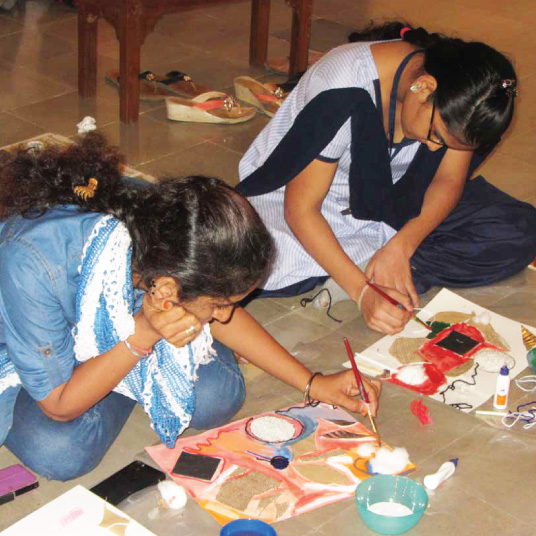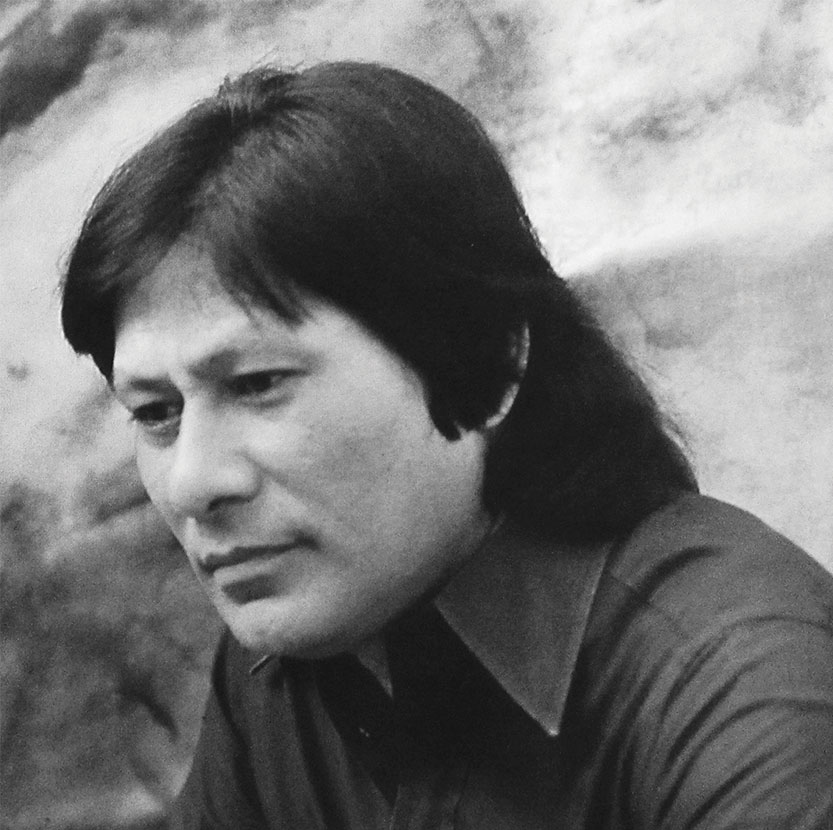
Workshop with students from Helen Keller Institute for Deaf & Blind and Happy Home & School for the Blind
The students were first given an introduction to abstract art, and one of the best Indian abstractionists- Laxman Shreshtha. They were then given a sensory walk-through of the Laxman Shreshtha exhibit. That was followed by an activity where the visually impaired children created textured collages using the material they were given like jute, bubblewrap, wool, paper etc.

Born in Siraha, Nepal, in 1939, Laxman Shreshtha was educated at the University of Bihar, Patna; the Sir J J School of Art, Mumbai; the Ecole Nationale Superieure des Beaux Arts, Paris; and the Central School of Art, London. In the Parisian tradition of the atelier, he also studied at the Academie de la Grande Chaumiere and with the legendary print-maker Stanley William Hayter at Atelier 17.
Shreshtha has held numerous solo exhibitions of his works since the early 1960s, and has also been represented in major curated exhibitions in India and overseas. Shreshtha has been the recipient of many awards, fellowships and honours, including the French Government Scholarship, the British Council Grant, and the Deutscher Akademischer Austauschdienst (DAAD, Germany) residency.
Shreshtha started his career as a figurative artist but gradually moved onto abstract works. His journey, from being a member of an aristocratic family in Nepal, to a struggling art student on the brink of starvation, made him embark on a spiritual quest, which has been reflected in his work. He looked for answers to his early existentialist dilemmas in books on Western philosophy. Later, he turned to the Upanishads and to Buddhism and his paintings reflect these experiences. These abstract works are greatly inspired by landscapes, sometimes echoing the mountain peaks of his native home Nepal, the pristine white light of rarefied heights sears through the dense opacity of colour creating dazzling effects. His desire for capturing the expanse of the Himalayas made him create his large-scape works. His works are both sensuous and meditative in their shifts and balances of colour. There is an intermingling of vivid browns, yellows, reds, oranges and blues. He is greatly inspired by Jazz and classical music, and listens to it while he paints.
Until the 1980s, he was extremely social, but now turned into a recluse. He lives and works in Mumbai.